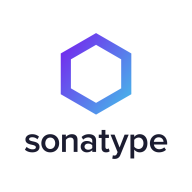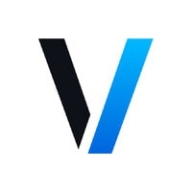

Veracode and Sonatype Repository Firewall are both major players in the application security industry. Sonatype Repository Firewall seems to have the upper hand due to its stronger feature offerings, while Veracode receives positive feedback for its pricing and support.
Features: Veracode provides comprehensive vulnerability scanning, integration capabilities, and strong scanning coverage. Sonatype Repository Firewall offers effective policy enforcement, real-time vulnerability prevention, and proactive threat blocking.
Room for Improvement: Veracode users wish for better integration with certain tools, enhanced scanning speeds, and faster process improvements. Sonatype users point to a need for improved documentation, more customizable policy settings, and a simpler learning curve.
Ease of Deployment and Customer Service: Veracode is known for its straightforward deployment model and strong customer support, appreciated for its clear setup process. Sonatype Repository Firewall provides a flexible cloud-based deployment model with competent support but may involve a steeper learning curve.
Pricing and ROI: Veracode has competitive setup costs with potential for improved ROI through speedier process enhancements. Sonatype Repository Firewall incurs higher costs, yet users recognize a strong ROI due to its robust security features.
| Product | Market Share (%) |
|---|---|
| Veracode | 8.0% |
| Sonatype Repository Firewall | 0.5% |
| Other | 91.5% |


| Company Size | Count |
|---|---|
| Small Business | 69 |
| Midsize Enterprise | 43 |
| Large Enterprise | 112 |
Sonatype Repository Firewall is a cloud-based security solution designed to safeguard your software supply chain against malicious components. It operates by meticulously scanning and evaluating each new component against customized governance policies, thereby effectively identifying and blocking potential threats before they infiltrate your development pipeline. What sets Sonatype Repository Firewall apart is its user-friendly setup, seamless integration with existing workflows, and remarkable scalability, making it suitable for software development environments of any size. Key features include blocking malicious components through behavioral analysis, malware scanning, and vulnerability assessment, as well as the ability to enforce custom governance policies. By utilizing this tool, organizations can enhance their software supply chain security, mitigate risks related to supply chain attacks, bolster compliance with industry standards, and ultimately reduce costs associated with security incidents.
Veracode is a leading provider of application security solutions, offering tools to identify, mitigate, and prevent vulnerabilities across the software development lifecycle. Its cloud-based platform integrates security into DevOps workflows, helping organizations ensure that their code remains secure and compliant with industry standards.
Veracode supports multiple application security testing types, including static analysis (SAST), dynamic analysis (DAST), software composition analysis (SCA), and manual penetration testing. These tools are designed to help developers detect vulnerabilities early in development while maintaining speed in deployment. Veracode also emphasizes scalability, offering features for enterprises that manage a large number of applications across different teams. Its robust reporting and analytics capabilities allow organizations to continuously monitor their security posture and track progress toward remediation.
What are the key features of Veracode?
What benefits should users consider in Veracode reviews?
Veracode is widely adopted in industries like finance, healthcare, and government, where compliance and security are critical. It helps these organizations maintain strict security standards while enabling rapid development through its integration with Agile and DevOps methodologies.
Veracode helps businesses secure their applications efficiently, ensuring they can deliver safe and compliant software at scale.
We monitor all Application Security Tools reviews to prevent fraudulent reviews and keep review quality high. We do not post reviews by company employees or direct competitors. We validate each review for authenticity via cross-reference with LinkedIn, and personal follow-up with the reviewer when necessary.